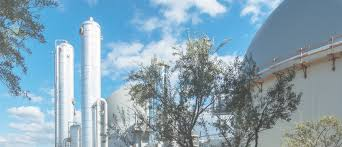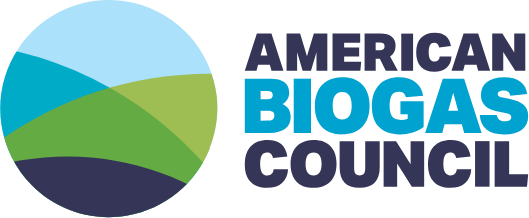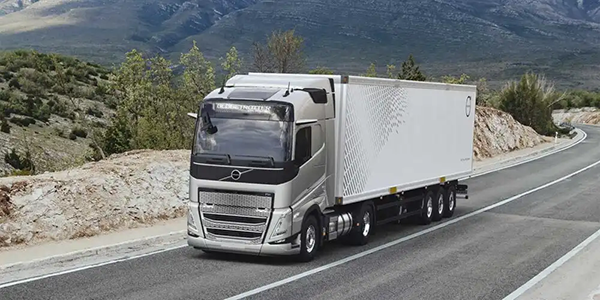Welcome to our monthly recap, where we combine the latest in the RNG industry with exclusive Greenlane Renewables updates, as we collectively navigate the path to a more sustainable future.
Some great industry developments are at work as we continue to cover the RNG space!
Greenlane’s Latest News

Greenlane Renewables Announces Results From 2025 Annual General Meeting of Shareholders
On June 25th Greenlane announced the results from its 2025 Annual General Meeting of Shareholders held on June 25, 2025 (the “Meeting”). Shareholders approved all matters submitted to them for approval at the annual general meeting.
Click HERE to read the complete news release.
Greenlane Renewables Files Additional Patent Application for its New Landfill Gas Upgrading Technology
On June 24th Greenlane announced the filing of an additional patent application for its new landfill gas upgrading technology. This new filing adds to the size and strength of Greenlane’s intellectual property portfolio, reinforcing technology leadership in the production of renewable natural gas (“RNG”), and builds upon its December 2024 announcement of new patent applications. These innovations relate specifically to proprietary system architecture and process enhancements that optimize oxygen and nitrogen removal, two of the most persistent technical barriers to efficient landfill gas upgrading, while maximizing methane recovery and reducing capital cost.
Click HERE to read the complete news release.
Greenlane Announces Over $2 Million in Orders for Biogas Desulfurization Equipment
On June 2nd Greenlane announced that its wholly-owned subsidiary Airdep S.r.l. has received new purchase orders totalling over $2 million (€1.3M). The purchases were made by a repeat customer for the supply of multiple units of proprietary biogas desulfurization equipment to support the production of renewable natural gas (“RNG”). Order fulfillment is expected to commence immediately.
“Our aim at Greenlane is to make RNG projects more accessible and scalable by solving the industry’s most challenging technology problems, one of which is biogas desulfurization,” said Brad Douville, CEO of Greenlane. “All biogas projects require hydrogen sulfide (“H2S”) removal and our biogas desulfurization product line has set the standard in Italy and is increasingly being adopted in global markets. According to the International Energy Agency, Italy is the fastest growing biomethane market in Europe. Our biogas desulfurization product line delivers a proven and reliable regenerative solution where the goal is high H2S removal performance at low cost.”
Click HERE to read the complete news release.
Greenlane Product News
Closing the landfill gas upgrading innovation gap
Landfill gas (LFG) is the foundation of renewable natural gas (RNG) production, yet today’s LFG upgrading technology creates costly trade-offs between performance and affordability. Our recent article highlights the urgent need for innovation to address technical barriers associated with oxygen and nitrogen removal, which hinder RNG projects from being more accessible and scalable. By examining market dynamics in the U.S., Canada, and Brazil, it underscores the global demand for breakthroughs that can unlock RNG’s full potential in the growth of clean, decarbonized and resilient energy.
Read more HERE.
Industry News

International Energy Agency Publishes Outlook for Biogas and Biomethane
Biogases play an important and growing role in energy systems. Produced locally using organic waste, biogas and biomethane can contribute to energy security, waste management, emissions reductions and agricultural development.
This report presents a first-of-its-kind global geographical analysis of the untapped potential of biogas and biomethane from agriculture, municipal waste and forestry residues. Using detailed geospatial and production cost data, it assesses the potential, costs and suitability of over 30 types of feedstocks in more than 5 million locations worldwide. According to the report, if fully realized, total global potential for RNG production is estimated at 990 bcm per year (35 billion mmbtu/year), which represents:
- 20X current production levels
- 25% of total global natural gas demand
- 21% of total global petroleum demand
In the US, if fully realized, total potential for RNG production is estimated at 100 bcm per year (3.6 billion mmbtu/year), which represents:
- 16X current production levels
- 11% of total US natural gas demand
- 32% of diesel/distillate fuel consumed across all modes of transportation – trucks, ships, trains, planes, etc.
Read More

U.S. Has Capacity to Scale Biogas Eight-Fold
The American Biogas Council recently released state‑by‑state data showing enormous untapped potential—enough organic feedstock exists to support an eight-fold expansion in U.S. biogas energy capacity, representing some 17,000 future projects. If fully built, this could generate 255 billion kWh of renewable electricity annually, powering 23.7 million homes or nearly all households in Texas and California combined.
Similarly, a fully built-out biogas sector could provide enough fuel to supply 40.4 million vehicles a year—or all the passenger vehicles in California, Texas, Florida, New York and Pennsylvania combined. All of this energy would be generated each year from 30 million tons of farm animal manure and 12 million tons of municipal wastewater biosolids (sludge) produced in the U.S., along with 74 million tons of surplus food including 24 million tons of inedible food waste sent to landfills each year.
Read More

Volvo Gas-Powered Trucks see Overseas Sales Surge, Emissions Drop
Volvo Trucks reports a 25% rise in global sales of its gas-powered models in 2024. Designed to reduce greenhouse gas emissions, Volvo gas-powered trucks can cut CO2 output by up to 100% when running on renewable biogas, making them an increasingly popular alternative to diesel in the commercial transport sector.
More than 8,000 Volvo gas-powered trucks have been sold worldwide, with notable growth in countries like Sweden, Norway, the Netherlands, Spain, and the UK. These trucks are available in Volvo’s FM, FH, and FH Aero models and run on either standard LNG or biogas produced from organic waste. They can operate up to 1,000 kilometers (621 miles) per fill, making them viable for long-haul, regional, and construction applications.
Read More

FortisBC customers will have three per cent of their gas designated as Renewable Natural Gas
FortisBC Energy Inc. (FortisBC) has received approval from the British Columbia Utilities Commission (BCUC) to maintain the cost of gas rate for its customers at $2.230 per gigajoule (GJ) as of July 1. Also on July 1, all FortisBC customers will have three per cent of their gas designated as Renewable Natural Gas (RNG) through the designated RNG blend, up from two per cent.
The increase to the designated RNG blend has been approved on an interim basis. The BCUC reviews FortisBC's cost of gas and voluntary RNG program rates every three months.
"We understand that affordability and reliability are top priorities for many of the families and businesses we serve in British Columbia," said Sarah Nelson, director of customer service at FortisBC. "That's why we remain committed to keeping rates as low as possible while ensuring reliable energy service and supporting progress on climate action goals."
Read More
Thank you for your time and interest in Greenlane Renewables and have a great day!






